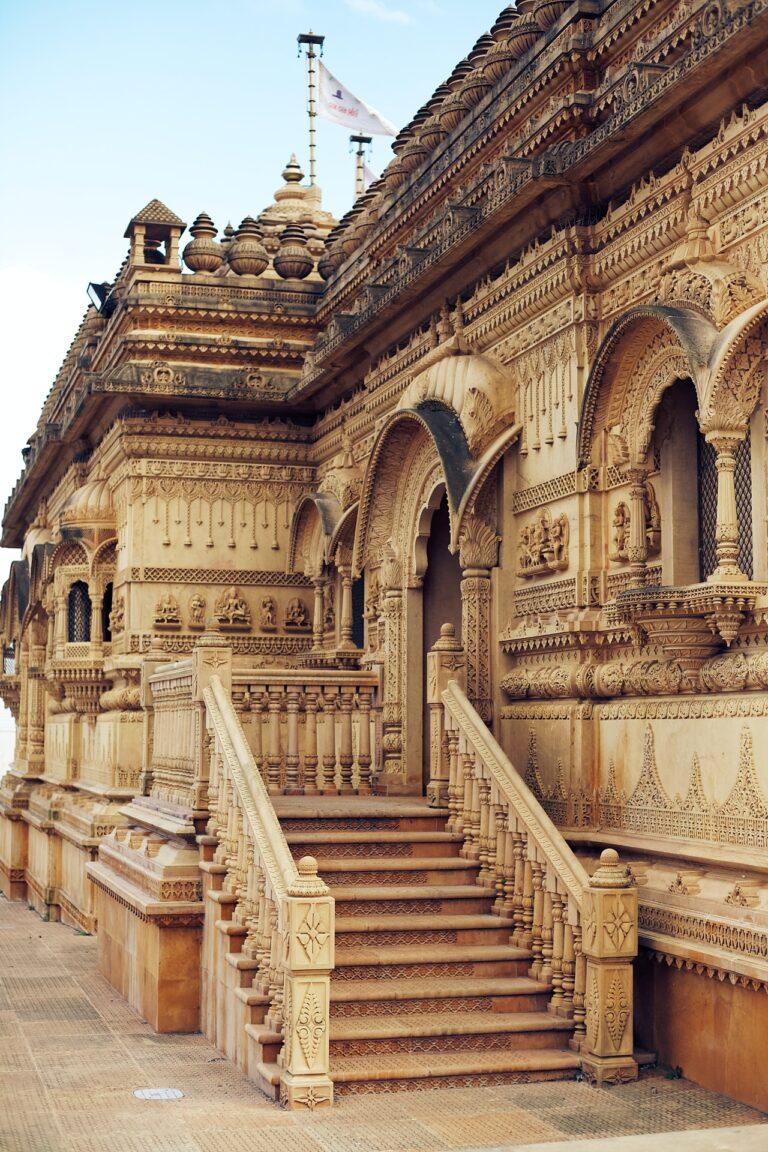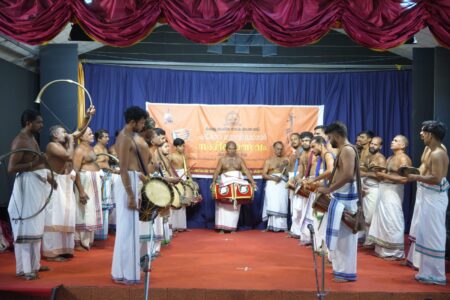When analysing the iconography of temples founded by the Birla family, the multitude of female representations becomes apparent.
When analysing the iconography of temples founded by the Birla family, the multitude of female representations becomes apparent. They include goddesses, saints or women who became famous for their remarkable achievements. The choice of characters stemmed from the overall ideology that guided the foundations—mainly perfect Āryas, patterns of virtue and proper conduct.
The Genesis of Ideal Aryan Womanhood
The first Orientalists who studied Sanskrit literature contributed to the creation of a vision of India as a land of lofty ideas and romantic feelings. Sir William Jones was the first and most eminent among them, who influenced many more researchers. He discovered the common roots of Sanskrit and most European languages—the Indo-European family, which also contributed to a major interest in the history of India. He believed that in the ancient past, the Hindus created great art, had excellent knowledge and good law, although they would later become degenerate and backward.
His point of view, translations and analyses of Indian works inspired both connoisseurs of Sanskrit and Indian culture as well as writers and poets. Such artists contributed significantly to the creation of a vision of a woman who would embody the ideals of the Indian past.
One of the most important achievements in this context was Sir William Jones’s English translation of the Kālidāsa drama—Śākuntala (5th−6th century) in 1789. This was the first comprehensive, direct translation from Sanskrit; previously, Persian versions had been used. The translator did not hide his delight with this work that, in his own words, was written in times, “when the British were like the uncouth Hanuman army”. This translation actually initiated a romantic approach to India, while in the context of recreating an ideal Indian past with woman as its personification, a greater contribution was made by Henry Thomas Colebrooke, who in turn inspired other scholars such as Max Müller with his work. Colebroke believed that the Vedic period was the golden age of the Aryan civilisation, followed by a gradual fall, culminating in complete degeneration in his times. Both he and Jones presented a vision of India as a Vedic “golden age” standing in contrast to contemporary backwardness. Oriental scholars studied the texts and tried to “restore the local truth contained in their writings,” because they themselves “do not understand their own texts.”…

Book Details:
The Temple Road Towards a Great India
Birla Mandirs as a Strategy for Reconstructing Nation and Tradition
Marta Kudelska, Dorota Kamińska-Jones, Agnieszka Staszczyk, and Agata Świerzowska
Jagiellonian University Press
608; $65.00/ £50.00
Publication Date: August 2021
In reconstructing the ideal Hindu, the authors recalled some remarkable examples from the distant past, such as Gārgī Vācaknavī (about 700 BC) or Maitreyī (around the 8th century BC)—learned philosophers, authors of a number of Vedic hymns, courageous women who had innovative views, often presenting heterodox ideas and practices.
Special attention was paid to the custom of satī. Colebrooke decided to investigate this ritual, referring to Sanskrit texts, to avoid any distortions which, in his opinion, had occurred in the past. Recalling quotes about the magnificence of the women who joined their husband’s funeral pyre, he contributed to the change in the perception of the satī ritual—from a savage barbaric act to an exaggerated form of self-sacrifice in the name of a woman’s love for her husband and her sense of duty towards him. These visions were upheld by later authors of popular science publications devoted to India’s past. They particularly appealed to the imagination of European women with academic aspirations in their full, subliminal descriptions of satī. Charlotte Manning (Speir) and Clarisse Bader were moved by the sacrifice made by Indian women and presented them as spiritual beings, full of virtues and capable of the highest forms of devotion in the name of love and the defence of honour. They quoted fragments of ancient texts as well as contemporary events to prove that these qualities had always been true of Indian women. For example, Speir suggestively reports how a widow persuaded a British official, Colonel Sleeman, to consent to her self-immolation. She was said to have sat motionless after the death of her husband for five days and thus spoke:
My soul has been for five days with my husband’s near that sun;
nothing but my earthly frame is left. […] My pulse has long ceased to
beat, my spirit has departed, and I have nothing left but a little earth,
which I desire to mingle with the ashes of my husband. I shall suffer
nothing in burning and if you would have proof, order some fire, and
you shall see this arm consumed without my feeling pain.
Women in India not only burnt on their husbands’ pyres, but also in the defence of honour. As an example of such a heroine, the princess Padmini was often mentioned, who preferred to burn rather than fall into the hands of the enemy—a Muslim invader, also inspiring many women from neighbouring areas to follow the same course of action.
In publications about examples of great Indian women, literary, mythological and historical characters sometimes merged. These were enchanting heroines who performed honourable and brave deeds, were revered as outstanding rulers, and were all equated with each other and thus became models of Indian womanhood, whose life was a confirmation of the high status of women in the past and of their attributes of character and morality.
The Orientalists, especially the second generation, contributed to creating a vision of India’s exalted past—the history of Aryan India. In Indian women they saw the perfect Aryan female, the embodiment of virtue, morality and noble ideas, capable of the highest sacrifices in the name of love and the defence of honour. Such visions lit up the imagination of writers, poets and other artists who repeatedly addressed the subject of the sublime Indo-Aryan womanhood in their works.
(Excerpted with permission from Columbia University Press and Jagiellonian University Press from the book The Temple Road Towards A Great India)
Write to us at [email protected]




